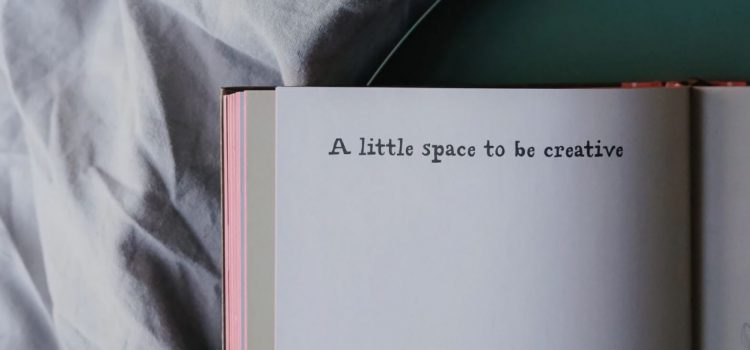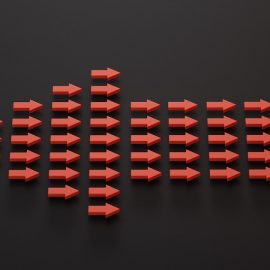

This article is an excerpt from the Shortform book guide to "Manage Your Day-to-Day" by 99U and Jocelyn K. Glei. Shortform has the world's best summaries and analyses of books you should be reading.
Like this article? Sign up for a free trial here.
Do you make time for unstructured creativity? Do you tend toward perfectionism? How often do you unplug from technology?
According to many creative professionals and productivity experts, creativity is the result of consistent work habits coupled with a creative mindset. You can foster such a mindset by prioritizing unstructured creativity, rejecting perfectionism, leaning into challenges, and taking opportunities to unplug.
Keep reading to learn how to stay creative by following this recipe.
How to Stay Creative
As you give yourself more time to work on creative projects, you also need to practice honing a creative mindset that keeps you inspired and helps you better work through challenges and creative blocks. Let’s look at four gems of expert advice on how to stay creative.
#1: Prioritize Unstructured Creativity
Todd Henry, the founder of Accidental Creative, suggests that the key to sustaining creativity is to make time for unstructured creativity (what he calls “unnecessary creation”)—creative projects or activities that may not have a specific practical purpose or immediate outcome. He explains that, while it may seem counterintuitive to invest valuable time in something seemingly purposeless, doing so will nourish your creativity and keep your motivation alive.
(Shortform note: In The Artist’s Way, artist and educator Julia Cameron suggests that tapping your creative potential also requires you to seek out new sources of inspiration. She suggests scheduling a weekly “Artist Date,” a designated time to take yourself on a solo excursion that stimulates your creativity. These outings could include visiting art galleries, exploring nature, attending a live performance, or simply indulging in a hobby or interest— anything that inspires your creativity.)
Henry writes that, when creative people apply their skills only within the confines of their job, they can become frustrated by the restrictions and judgment attached to their work and eventually lose inspiration. Unstructured creativity, on the other hand, allows you to break free from constraints and external demands and tap your true creative potential. It fuels inspiration by making room for the exploration of new ideas and the development of new skills and perspectives, reconnecting you with your intrinsic drive to create.
(Shortform note: While creativity can be unintentionally squashed in the workplace, this doesn’t have to be the case. According to the Harvard Business Review, organizations have the potential to inspire creativity in the workplace by matching people with assignments that align with their expertise and interest, allowing autonomy on projects, providing the necessary resources, and promoting diverse teams that bring different perspectives.)
To prioritize personal creative projects, Henry suggests dedicating regular blocks of time for unstructured creativity. He also suggests maintaining a list of exciting projects to work on during that time and keeping a notebook to capture intriguing questions and ideas. That way you’ll always have an idea you can be working on.
(Shortform note: If you’re looking for a more structured system for managing your time and keeping track of creative ideas, The Bullet Journal Method offers a structured approach to nurture and evolve creative projects. For example, using a daily log allows for quick recording of insights and thoughts, while integrating creative prompts fosters idea generation; an index acts as a valuable tool to capture random thoughts and sketches, preventing the loss of these ideas and promoting curiosity. And when you move content from one part of your journal to another during the migration process, reviewing and revisiting entries facilitates idea development.)
#2: Reject Perfectionism
Even when working on purely personal projects, many creative people still struggle with perfectionism, but, according to Elizabeth Grace Saunders, author of The 3 Secrets to Effective Time Investment, perfectionism is the enemy of creativity.
She explains that there are typically two contrasting approaches to creativity: striving for flawless execution or valuing practicality over perfection.
Those who strive for flawless execution refine every detail and seek the elusive ideal of perfection. They can be highly critical of their own work and may be hesitant to share it until it meets their lofty standards. Perfectionism not only prevents them from taking risks but often prevents the work from ever being completed or shared.
On the other hand, those who value practicality and progress prioritize taking action, embracing imperfections, and iterating on their ideas. Rather than being hindered by the fear of failure or the pursuit of an unattainable ideal, they focus on experimentation, learning, and adapting their work along the way. They understand that imperfections and mistakes are integral to the creative process and use them as stepping stones to refine and improve their creations.
Acknowledging that we all want to do our best work, strive to value practicality and progress. You’ll produce more creative work and be less stressed in the process.
#3: Lean Into Challenges
Whether a perfectionist or a pragmatist, you’ll inevitably feel stuck sometimes. Creativity coach Mark McGuinness explains that, while these moments can feel paralyzing, they have the potential to inspire rather than frustrate.
He argues that understanding the type of creative block you’re facing can be a powerful tool in overcoming it. Here are several common types of creative blocks and suggested strategies to move through them:
Lack of inspiration: If you find yourself lacking inspiration for a project, take a break and allow your unconscious brain to continue working on it in the background, even if your conscious mind isn’t actively engaged.
Lack of extrinsic motivation: The pressure for success can be overwhelming and hinder creativity. Create a dedicated space or time solely for creative pursuits, free from discussions about business or money, to protect and nurture your creative process.
Emotional block: Sometimes, an emotionally intense or intimidating project can lead to procrastination. Remind yourself that you have the ability to create whatever you desire, and ultimately you have control over who will eventually see your work.
Personal issues: While challenges in your life can block creativity, the reverse can also be true: Your creative projects can serve as an oasis from life challenges. Embrace the opportunity to gain fresh perspectives by temporarily stepping away from the issues you’re wrestling with.
Limited resources: Whether it’s a lack of financial resources, time, or knowledge, you can make a virtue of necessity by setting yourself the creative challenge of achieving as much as possible with what you have. Remind yourself that more resources don’t always lead to better results.
#4: Take Opportunities to Unplug
Finally, to hone your creative mindset, take breaks from technology. According to Tiffany Shlain, filmmaker and author of 24/6, disconnecting from screens allows you time to focus on your relationships, personal reflection, and creativity. She advocates for a “technology shabbat,” a practice of turning off all screens for one day a week. As Scott Belsky, Adobe’s chief product officer and co-founder of Behance, explains, disconnecting from the constant flow of information and communication will empower you to tap your imagination, be more in touch with your instincts, and take advantage of unexpected opportunities and connections that you might’ve otherwise missed.
(Shortform note: The negative effects of technology, specifically smartphones, might be more insidious than mere distraction. Psychologist Jean Twenge, who researches generational differences, has observed that children born after 2005 have experienced a sharp increase in mental health crises, including depression and suicide, coinciding with the rise of relying on their phones and social media as their primary source of human interaction.)
Exercise: Find Inspiration With Unstructured Creativity
Several contributors argue that the key to sustaining creativity is to make time for unstructured creativity—creative projects or activities that may not have a specific practical purpose or immediate outcome.
- What’s one personal creative pursuit that you’ve wanted to pursue but haven’t made time for?
- What’s the first step you need to take to get started on this project?
- Give yourself a deadline for getting started on this project.

———End of Preview———
Like what you just read? Read the rest of the world's best book summary and analysis of 99U and Jocelyn K. Glei's "Manage Your Day-to-Day" at Shortform.
Here's what you'll find in our full Manage Your Day-to-Day summary:
- That creativity is the result of disciplined work habits, not innate genius
- Tips from experts on how to boost your creativity, focus, and productivity
- Why you should never strive for creative perfection






